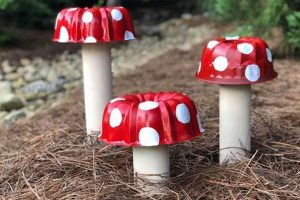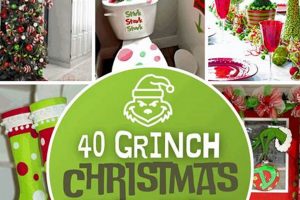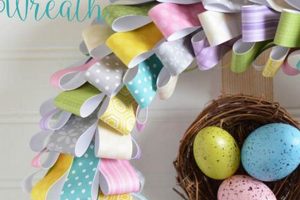A do-it-yourself cookie decorating collection comprises a set of materials and instructions intended to enable individuals to embellish cookies creatively at their convenience. These kits typically include plain baked cookies, various colors of icing, an assortment of sprinkles, and decorating tools such as piping bags or stencils. For instance, a themed kit might feature cookies shaped like holiday characters, along with red, green, and white icing, and festive sprinkles.
The value of such a collection lies in its capacity to provide an engaging and accessible activity for individuals of all ages. It fosters creativity, encourages family interaction, and offers a personalized approach to celebratory baking. Historically, decorating baked goods has been a tradition associated with holidays and special occasions, evolving from simple ornamentation to elaborate artistic expressions. These kits streamline the process, making it easier for individuals to participate in this tradition regardless of their baking experience.
The following sections will elaborate on the components of these collections, explore different thematic options, and provide guidance on how to maximize the creative potential of these tools, ultimately enhancing the user experience.
Optimizing a Do-It-Yourself Cookie Embellishment Collection
Effective utilization of a do-it-yourself cookie embellishment collection requires careful consideration of several factors to achieve optimal results and minimize potential complications.
Tip 1: Icing Consistency: Ensure icing attains a suitable consistency for outlining and flooding. Divide the icing into separate bowls and gradually add water, mixing thoroughly until the desired consistency is reached. A thicker consistency is ideal for outlining, while a thinner consistency allows for smooth flooding of the cookie surface.
Tip 2: Sprinkles Application: Apply sprinkles immediately after flooding the cookie with icing. This ensures proper adhesion and prevents the icing from drying before the sprinkles are applied. Gently press the sprinkles into the icing for enhanced adherence.
Tip 3: Color Mixing Strategy: Exercise caution when mixing food coloring into icing. Add color gradually, mixing thoroughly after each addition to avoid oversaturation. A toothpick can be used to introduce small amounts of gel food coloring for precise color control.
Tip 4: Piping Bag Technique: Practice piping techniques on parchment paper before applying icing directly to the cookies. This allows for refinement of control and consistency in applying icing outlines and decorative details.
Tip 5: Preventing Icing Bleed: Allow the outline icing to dry completely before flooding the cookie interior. This creates a barrier that prevents the flood icing from bleeding into the outline, resulting in cleaner, more defined edges.
Tip 6: Storage Best Practices: Store undecorated cookies in an airtight container to maintain freshness. Prepared icing should also be stored in airtight containers or covered tightly with plastic wrap to prevent drying. Decorated cookies should be allowed to dry completely before stacking or packaging.
Proper execution of these techniques enhances the aesthetic appeal and extends the shelf life of decorated cookies. Adherence to these guidelines contributes to a more satisfying and successful experience.
The following sections will provide detailed instructions on advanced decorating techniques and creative design ideas to further elevate the art of cookie embellishment.
1. Ingredients Quality
The quality of ingredients directly impacts the outcome and overall satisfaction derived from a do-it-yourself cookie decorating collection. Inferior ingredients can lead to undesirable results, such as cookies that are unpalatable or icing that is difficult to work with, thereby undermining the purpose of the kit. Conversely, high-quality ingredients contribute to superior taste, texture, and aesthetic appeal, enhancing the user experience. For instance, a kit utilizing artificial flavorings and preservatives in its icing may produce cookies with an off-putting taste, while a kit employing natural flavor extracts and high-grade sugar can result in a more pleasant and satisfying culinary creation. The choice of flour, sugar, and butter used in the cookies themselves also significantly affects their taste and texture, influencing the overall impression of the product.
Consider, for example, the difference between a kit containing shortening-based icing and one featuring butter-based icing. Shortening-based icing, while often more stable and easier to pipe, can lack the rich flavor and smooth texture of butter-based icing. This can result in decorated cookies that look visually appealing but are less enjoyable to consume. Similarly, the type of food coloring used can affect the final result. Artificial food colorings may produce vibrant, intense hues, but can also impart a slightly bitter taste or stain surfaces. Natural food colorings, while often less vibrant, offer a more wholesome alternative, aligning with consumer demand for cleaner, less processed ingredients. The significance extends to the sprinkles as well: higher-quality sprinkles use better dyes and less wax, resulting in a more appealing appearance and texture.
In summary, ingredient quality is a critical determinant of the success of a do-it-yourself cookie decorating collection. The use of premium ingredients elevates the final product, enhances user satisfaction, and justifies a higher price point. Manufacturers should prioritize ingredient quality to ensure the product delivers the intended experience and meets consumer expectations for taste, appearance, and overall quality. While challenges may exist in sourcing high-quality ingredients at competitive prices, the investment ultimately translates to a more desirable and successful product.
2. Icing Consistency
The consistency of icing is a critical determinant of success when utilizing a do-it-yourself cookie decorating collection. Icing that is either too thick or too thin presents significant challenges to the user. Thick icing is difficult to pipe smoothly and may not adhere properly to the cookie surface, leading to uneven and aesthetically unappealing results. Conversely, overly thin icing can spread uncontrollably, obscuring details and creating a messy appearance. Therefore, achieving the correct icing consistency is paramount for achieving the desired decorative effects.
The proper icing consistency allows for precise outlining of cookie shapes and controlled flooding of the interior spaces. A slightly thicker icing, used for outlining, creates defined edges that prevent the flood icing from bleeding. The flood icing, which should be thinner, then fills the outlined area smoothly, creating a uniform surface for further embellishments. Real-world examples abound: a child using a collection with thick, unyielding icing might struggle to create even a simple design, becoming frustrated and abandoning the activity. Conversely, a professional baker understands the nuances of icing consistency and can leverage it to create intricate and visually stunning designs. The practical significance lies in the impact on the final product’s appearance and the user’s overall experience. Icing is a tool with its own characteristics, in the kit.
In summary, icing consistency directly influences the visual outcome and user satisfaction associated with a do-it-yourself cookie decorating collection. Manufacturers must provide icing formulations that are readily adjustable to the desired consistency, along with clear instructions on how to achieve optimal results. Failure to address this critical factor can result in a substandard decorating experience and a diminished perception of the collection’s value. A well-executed collection acknowledges and accommodates the importance of appropriately textured icing.
3. Sprinkles Variety
The diversity of sprinkles included within a do-it-yourself cookie decorating kit significantly impacts the user’s creative latitude and the visual appeal of the finished product. A limited selection restricts design possibilities, while a wide assortment enables intricate and personalized embellishments.
- Shape and Size
The physical form of sprinkles, encompassing their shape and dimensions, directly affects the texture and overall aesthetic of decorated cookies. For instance, nonpareils offer a fine, granular texture, while larger shapes, such as stars or hearts, serve as focal points. The inclusion of various sizes and shapes allows the user to create layers of texture and visual interest. A kit containing only one type of sprinkle restricts design flexibility and limits opportunities for creative expression.
- Color Palette
The range of colors within a sprinkles assortment dictates the thematic possibilities of the cookie decorations. A limited color palette restricts the ability to create nuanced designs or replicate specific color schemes. Conversely, a broad spectrum of colors allows for intricate shading, detailed depictions, and adherence to specific event themes, such as holidays or birthdays. The effectiveness of a kit is significantly enhanced by the inclusion of both primary and secondary colors, as well as metallic or iridescent options.
- Texture and Finish
The surface finish of sprinkles, whether matte, glossy, or metallic, contributes to the overall visual impact. Matte sprinkles offer a subtle, understated appearance, while glossy sprinkles provide a vibrant sheen. Metallic or iridescent sprinkles add a touch of glamour and sophistication. The integration of different finishes introduces depth and dimension to the cookie decorations. A lack of textural variety can result in a flat and uninspired aesthetic.
- Composition and Flavor
While primarily decorative, the composition and flavor of sprinkles can subtly influence the overall taste profile of the finished cookies. Some sprinkles are composed of sugar and starch, while others contain chocolate or other flavorings. The presence of flavored sprinkles can complement or contrast with the flavor of the cookie itself, adding an additional layer of sensory experience. However, excessive or overpowering flavors should be avoided, as the primary focus remains on visual decoration.
The integration of varied shapes, colors, textures, and compositions within a sprinkles assortment is essential for maximizing the creative potential of a do-it-yourself cookie decorating kit. A well-curated selection of sprinkles empowers users to personalize their creations and achieve visually stunning results, enhancing the overall appeal of the product.
4. Tool Functionality
The efficacy of a do-it-yourself cookie decorating kit is intrinsically linked to the functionality of the tools provided. These instruments facilitate the application of icing and other embellishments, directly influencing the precision, ease, and overall quality of the final product. Inadequate or poorly designed tools can hinder the creative process, leading to frustration and suboptimal results.
- Piping Bag Design and Material
The construction of the piping bag, including its material and design, dictates its usability and performance. Durable, food-grade materials that withstand pressure are essential. A properly sealed bag prevents leakage and ensures consistent icing flow. For example, a bag with a textured exterior provides a better grip, enhancing control during intricate decorating tasks. Conversely, a flimsy or poorly sealed bag may burst under pressure, creating a mess and disrupting the decorating process. The presence of reusable or disposable options also contributes to the convenience and hygiene of the kit.
- Nozzle Variety and Precision
The inclusion of diverse nozzle types expands the range of decorative techniques achievable with the kit. Fine-tipped nozzles enable the creation of intricate lines and detailed patterns, while larger nozzles facilitate the rapid flooding of cookie surfaces. Precision in nozzle manufacturing is crucial for consistent icing flow and accurate pattern formation. A kit with poorly calibrated nozzles may produce uneven lines or inconsistent patterns, detracting from the overall aesthetic appeal. High-quality nozzles, made from durable materials, ensure longevity and prevent deformation during use.
- Spatula and Scraper Utility
Spatulas and scrapers serve essential functions in icing preparation and application. A flexible spatula facilitates the smooth mixing of icing and the even distribution of colorants. A scraper assists in cleaning the piping bag and removing excess icing from the cookie surface. The ergonomic design of these tools contributes to user comfort and reduces fatigue during prolonged decorating sessions. The absence of these tools necessitates the use of makeshift alternatives, potentially compromising the cleanliness and efficiency of the decorating process. The material needs to be easy to clean and food-safe.
- Stencil Design and Durability
Stencils, when included, provide a template for creating specific patterns or designs on the cookies. The intricacy and accuracy of the stencil design directly impact the fidelity of the resulting decoration. Durable, food-grade materials that withstand repeated use and cleaning are essential. A flimsy stencil may bend or tear easily, compromising the precision of the design. Stencils often feature simple designs to allow for quick and even decorating.
The functionality of tools within a do-it-yourself cookie decorating kit directly correlates with the user’s ability to execute decorative designs effectively. Kits featuring well-designed, durable tools enhance the user experience and promote creativity, leading to more visually appealing and satisfying results. Poor tool quality creates obstacles and undermines the potential of the kit.
5. Packaging Design
Packaging design constitutes a critical element of a do-it-yourself cookie decorating kit, serving functions beyond mere containment. The packaging directly influences a consumer’s initial perception of the product, impacting purchasing decisions. A well-designed package communicates quality, theme, and completeness, while inadequate packaging may deter potential buyers, regardless of the kit’s contents. Cause and effect are evident: attractive packaging generates consumer interest, while poorly executed designs can signal low quality, potentially undermining sales. The importance of packaging design extends to protection; the container must safeguard the cookies, icings, and other components from damage during transit and storage.
Examples of effective packaging designs within this market segment include clear, visually appealing boxes that showcase the kit’s contents. These often feature vibrant imagery of decorated cookies, inspiring creativity and providing decorating ideas. Conversely, kits packaged in opaque or generic containers may fail to convey the product’s value and potential. Functionality also plays a significant role: packaging should facilitate easy access to the components and provide organized storage. Practical significance is observed in improved shelf appeal and heightened consumer engagement, both vital for competitive advantage in the retail environment. Packaging design, therefore, affects not just the visual presentation, but also the user experience before and after purchase.
In summary, the packaging design of a do-it-yourself cookie decorating kit transcends basic protection to become a key marketing asset. It influences consumer perception, protects product integrity, and facilitates user convenience. Challenges may arise in balancing aesthetic appeal with cost-effectiveness and sustainability, but prioritizing strategic packaging design ultimately enhances product value and market success. A well-thought-out package connects directly to the broader theme of providing a positive and engaging baking experience.
6. Instruction Clarity
Instruction clarity serves as a cornerstone for the successful utilization of any do-it-yourself cookie decorating kit. The absence of clear, concise, and easily understandable instructions directly correlates with user frustration and diminished outcomes. If the instructions are ambiguous or incomplete, users are left to decipher potentially complex techniques, leading to inconsistent results and a compromised experience. The cause-and-effect relationship is straightforward: clear instructions empower users to execute decorative techniques accurately, while unclear instructions impede their ability to do so. Examples abound where vague wording about icing consistency or incorrect piping diagrams have led to failed attempts, wasted ingredients, and overall dissatisfaction with the product.
The importance of instruction clarity extends beyond basic procedural guidance. Effective instructions should also anticipate potential challenges and provide solutions. For instance, a comprehensive guide might include troubleshooting tips for common issues such as icing bleeding, air bubbles, or uneven sprinkle distribution. Real-world examples highlight this: a kit that provides detailed instructions for achieving different icing consistencies, complete with visual cues, significantly increases the likelihood of success. Conversely, a kit with rudimentary instructions that omit critical details about icing preparation or application is likely to lead to suboptimal results and negative user feedback. Instruction is a vital component of the product, not merely an addendum.
In summary, instruction clarity is an indispensable element of a do-it-yourself cookie decorating kit. Clear, comprehensive, and well-structured instructions empower users to navigate the decorating process with confidence, leading to enhanced creativity, improved outcomes, and greater overall satisfaction. While challenges may exist in balancing thoroughness with brevity and accessibility, prioritizing instruction clarity is essential for delivering a positive user experience and ensuring the commercial success of the product. The ultimate value stems from providing the user with the knowledge and ability to realize their creative vision.
Frequently Asked Questions Regarding Do-It-Yourself Cookie Decorating Kits
This section addresses common inquiries and misconceptions surrounding do-it-yourself cookie decorating kits, providing factual information to facilitate informed decision-making.
Question 1: What is the typical shelf life of a do-it-yourself cookie decorating kit?
The shelf life varies depending on the ingredients. Generally, undecorated cookies can last up to one week when stored in an airtight container at room temperature. Icing, particularly royal icing, is best used within three to four days of preparation and should be stored in an airtight container in the refrigerator. Sprinkles generally have a longer shelf life, often several months, provided they are stored in a cool, dry place.
Question 2: Are do-it-yourself cookie decorating kits suitable for individuals with dietary restrictions?
Suitability depends on the specific ingredients of the kit. Many kits contain common allergens such as wheat, dairy, and nuts. Individuals with dietary restrictions must carefully review the ingredient list prior to purchase. Certain manufacturers offer kits with gluten-free or vegan options, which should be clearly labeled.
Question 3: What tools are typically included in a do-it-yourself cookie decorating kit?
The contents vary by manufacturer, but common inclusions are plain baked cookies, pre-made icing in various colors, an assortment of sprinkles, piping bags, and decorating tips. Some kits may also include stencils, cookie cutters, or edible markers.
Question 4: How should icing be stored if not used immediately?
Icing should be stored in an airtight container in the refrigerator to prevent drying and maintain consistency. Prior to use, allow the icing to reach room temperature and remix thoroughly to ensure a smooth texture.
Question 5: What factors influence the price of a do-it-yourself cookie decorating kit?
Price is influenced by several factors, including the quality of ingredients, the quantity of components, the complexity of the decorating tools included, and the brand reputation. Kits with premium ingredients, extensive decorations, and specialized tools generally command a higher price point.
Question 6: How can icing consistency be adjusted if it is too thick or too thin?
If icing is too thick, gradually add small amounts of water or milk, mixing thoroughly after each addition, until the desired consistency is achieved. If icing is too thin, add powdered sugar in small increments, mixing well, until the icing thickens to the appropriate consistency.
In summary, successful utilization of these kits requires attention to ingredient quality, storage practices, and instruction adherence. Careful consideration of these factors contributes to optimal results.
The following section will explore the potential for customization within do-it-yourself cookie decorating kits, offering guidance for tailoring the experience to individual preferences.
Conclusion
This exploration of the “diy cookie decorating kit” has underscored its multifaceted nature, encompassing ingredient quality, tool functionality, instructional clarity, and packaging design. Each element significantly contributes to the overall user experience and determines the product’s market value. A comprehensive understanding of these facets is crucial for both consumers seeking to purchase these kits and manufacturers aiming to produce successful offerings.
The continued evolution of the “diy cookie decorating kit” market necessitates a commitment to innovation and quality. As consumer preferences shift and new technologies emerge, ongoing adaptation and refinement will be essential to maintain relevance and ensure continued success. The future trajectory of this product category hinges on a dedication to meeting consumer demands for accessible creativity and high-quality results.







